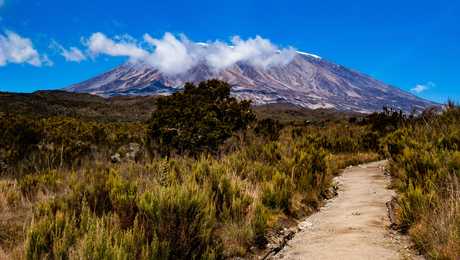High Alpine Zone on Kilimanjaro
The high alpine desert zone on Kilimanjaro lives above the low alpine area and sits at an altitude of between 4,000-5,000m or 13,200–16,500ft. This area is cool, dry and characterised by rocky slopes, hard volcanic ground and very little vegetation. The air is thinner here but the views of the mountain and Africa beyond are truly spectacular.








